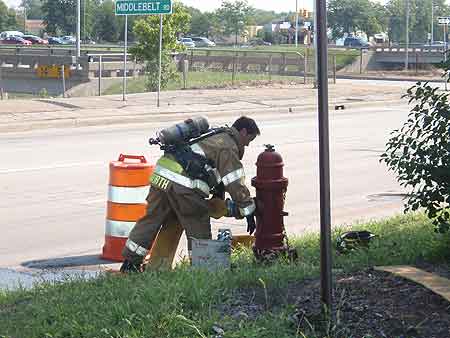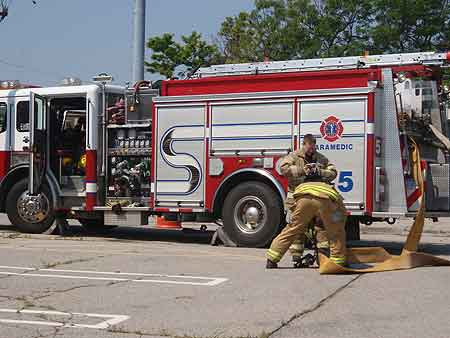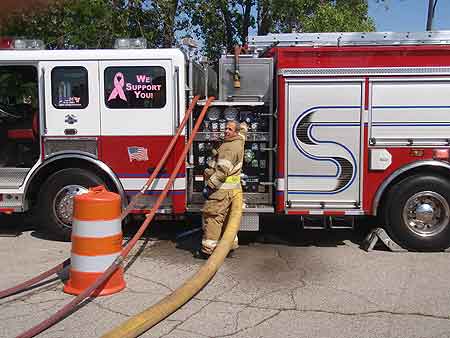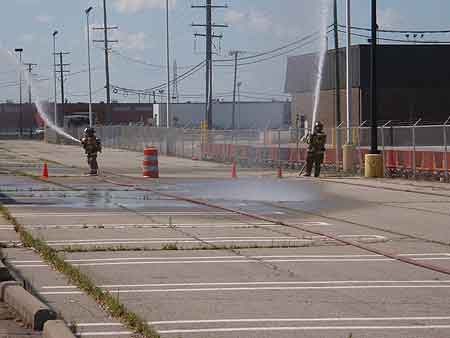
By Tom Kiurski
When I attended the National Fire Academy’s (NFA) “Training Program Manager” course, I was presented with much interesting information pertaining to my job, training coordinator for Livonia (MI) Fire & Rescue. As with many courses at the NFA, networking is strongly encouraged, and it gives you snapshots of what is happening all across the United States. One thing I learned is that many fire departments use the National Fire Protection Association (NFPA) Standard 1410, Standard on Training for Initial Emergency Scene Operations, as a roadmap for some training benchmarks for their fire departments.
I got as much information as I could get my hands on, got a copy of NFPA 1410, and started looking it over. The evolutions are spelled out in fairly simple terms, including the length of hose, the equipment used, and other pertinent information.
RELATED FIREFIGHTER TRAINING
Is There Any Benefit to the Traditional Timed Donning Drill?
Timed Drills for Stretching Hose Lines Into Buildings
Since the idea of timed evolutions was a new one to our department, we sent a note to our firefighting personnel outlining the evolution and the timing of the drill. The entire drill was planned out, and the requirements of the drill were included in an e-mail. This would allow personnel time to get familiar with the drill and equipment and their duties prior to the training evolution.
We began with the first evolution listed in the standard, which was a pretty basic operation. It called for connecting a 300-foot supply line from a fire hydrant to the fire truck. The truck would be placed into pump mode and receive the water from the hydrant and then supply, with adequate pressure, two handlines that would have to be stretched a minimum of 150 feet from the truck. The time would stop when both lines were flowing water from the hydrant, with all personnel in full personal protective equipment.
This is a great basic drill to start with. The NFPA suggested time for completing this evolution is three minutes. Our crosslays (1 ¾-inch handlines) were preconnected and 200 feet long, so add some time for the additional footage that has to be covered. For this drill to be completed within the recommended time, everyone had specific jobs to do, and they had to know them before the time started. We didn’t expect perfection, but the competitive spirit became evident as the week rolled on; the finishing times were getting much lower. A few companies had a few hang-ups that had to be worked through, and they went over time by a bit. Others went like clockwork and completed the evolution in far less than three minutes.
As with any training evolution, the drills were talked about with other companies at shift change. Suggestions were made from group to group, and some time was spent in practice. Isn’t that the idea of training anyway? The time didn’t matter as much as the fact that good training took place, times improved, and techniques were honed to a better level through practice.
Clearly state in writing how the evolution is to be performed so that everyone is measured doing the same evolution. You don’t want to unfairly allow one company’s interpretation to give them an unfair advantage. Make the rules, and make sure everyone adheres to them. Although the drill takes only three minutes to complete, you are spending time doing what most firefighters like to do: sharing loading the back of the truck. In addition, you have the satisfaction of knowing that you better at some of the basics because you have just spent time practicing them.

(1) The hydrant must be flowed before hooking up the supply line.

(2) The large-diameter hose must be broken down at 300 feet. The well-prepared crew has already greased the gaskets for an easy breakdown.

(3) The pump operator is busy throughout the entire evolution.

(4) Time stops when both lines are completely removed and flowing water received from the fire hydrant.


